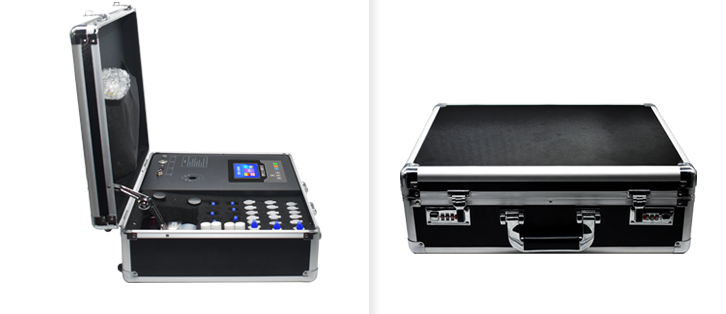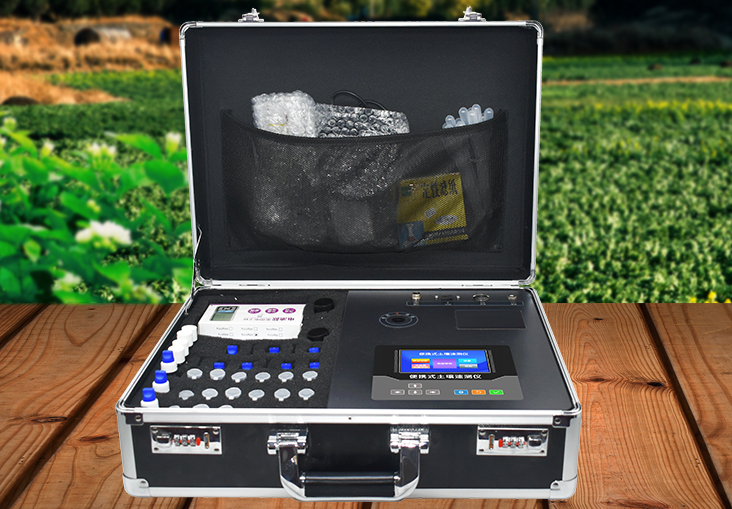Precision agriculture, also known as smart farming or digital farming, is a modern approach to agricultural management that utilizes technology and data-driven decision-making to optimize farm operations. One critical component of precision agriculture is the use of soil sensors, which provide valuable real-time information about soil conditions. This article explores the role of soil sensors in precision agriculture, highlighting their benefits, applications, and the future potential they hold in revolutionizing farming practices.

Enhanced Data Collection and Analysis:
Soil sensors play a vital role in gathering accurate and timely data about various soil parameters. These sensors measure essential factors such as moisture content, temperature, nutrient levels, salinity, and pH. By collecting this data at multiple points within a field, farmers can develop an in-depth understanding of their soil's variability. This information empowers them to make informed decisions regarding irrigation, fertilizer application, and crop management.
Optimizing Irrigation Management:
Water scarcity is a significant concern in many agricultural regions worldwide. By utilizing soil moisture sensors, farmers can effectively manage irrigation practices and avoid both over and under-watering. These sensors measure the water content in the soil, allowing farmers to understand when and how much water to apply based on the specific crop requirements. Optimizing irrigation not only conserves water but also prevents issues such as waterlogging and nutrient leaching, leading to improved crop health and yield.
Precise Nutrient Management:
Soil sensors assist in determining the nutrient status of the soil, enabling farmers to tailor their fertilizer applications accurately. By measuring nutrient levels, such as nitrogen, phosphorus, and potassium, soil sensors provide insight into the soil's fertility. This data allows farmers to adjust fertilizer rates and timing according to the crop's nutritional needs, minimizing waste and environmental pollution. Precise nutrient management promotes healthier and more productive crops while reducing costs associated with excessive fertilization.
Monitoring Soil Health:
Soil health is crucial for sustainable agriculture. Soil sensors play a critical role in monitoring soil conditions, including pH levels and salinity. With pH sensors, farmers can assess soil acidity or alkalinity, enabling them to adjust the soil's pH as needed for optimal plant growth. Salinity sensors help identify the presence of excessive salts in the soil, which can be detrimental to crop development. By monitoring soil health with these sensors, farmers can take prompt corrective actions, preventing soil degradation and maximizing long-term productivity.
Empowering Decision-Making:
The real-time data provided by soil sensors empowers farmers to make timely and informed decisions. By integrating this data with other relevant information, such as weather forecasts and crop growth models, farmers can accurately predict crop water demand, nutrient requirements, and disease susceptibility. This information enables proactive decision-making, allowing farmers to take preventive measures and optimize farm operations. Ultimately, soil sensors enhance the overall efficiency and profitability of agricultural practices.

Challenges and Future Outlook:
While soil sensors offer significant benefits, there are still challenges to overcome for their widespread adoption. Cost, maintenance, and compatibility with existing farm management systems are some of the factors that need to be addressed. However, ongoing technological advancements are making soil sensors more affordable, robust, and easy to use.
Looking ahead, the future of soil sensors in precision agriculture holds great promise. Advancements in sensor technologies, including miniaturization, wireless connectivity, and data integration, will further revolutionize farming practices. Integration with other smart farming technologies like drones and autonomous machinery will enable real-time data collection over large areas, enhancing productivity and reducing labor-intensive tasks. Additionally, the use of machine learning algorithms and artificial intelligence will facilitate data analysis and provide predictive insights for improved decision-making.
Conclusion:
Soil sensors are indispensable tools in precision agriculture, offering valuable real-time data about soil conditions. From optimizing irrigation management and precise nutrient applications to monitoring soil health and empowering decision-making, soil sensors contribute to enhanced efficiency, sustainability, and profitability in farming operations. As technology continues to advance, the cost-effectiveness and capabilities of soil sensors are expected to improve further, paving the way for a future where precision agriculture becomes the norm. With the integration of soil sensors and other smart farming technologies,







